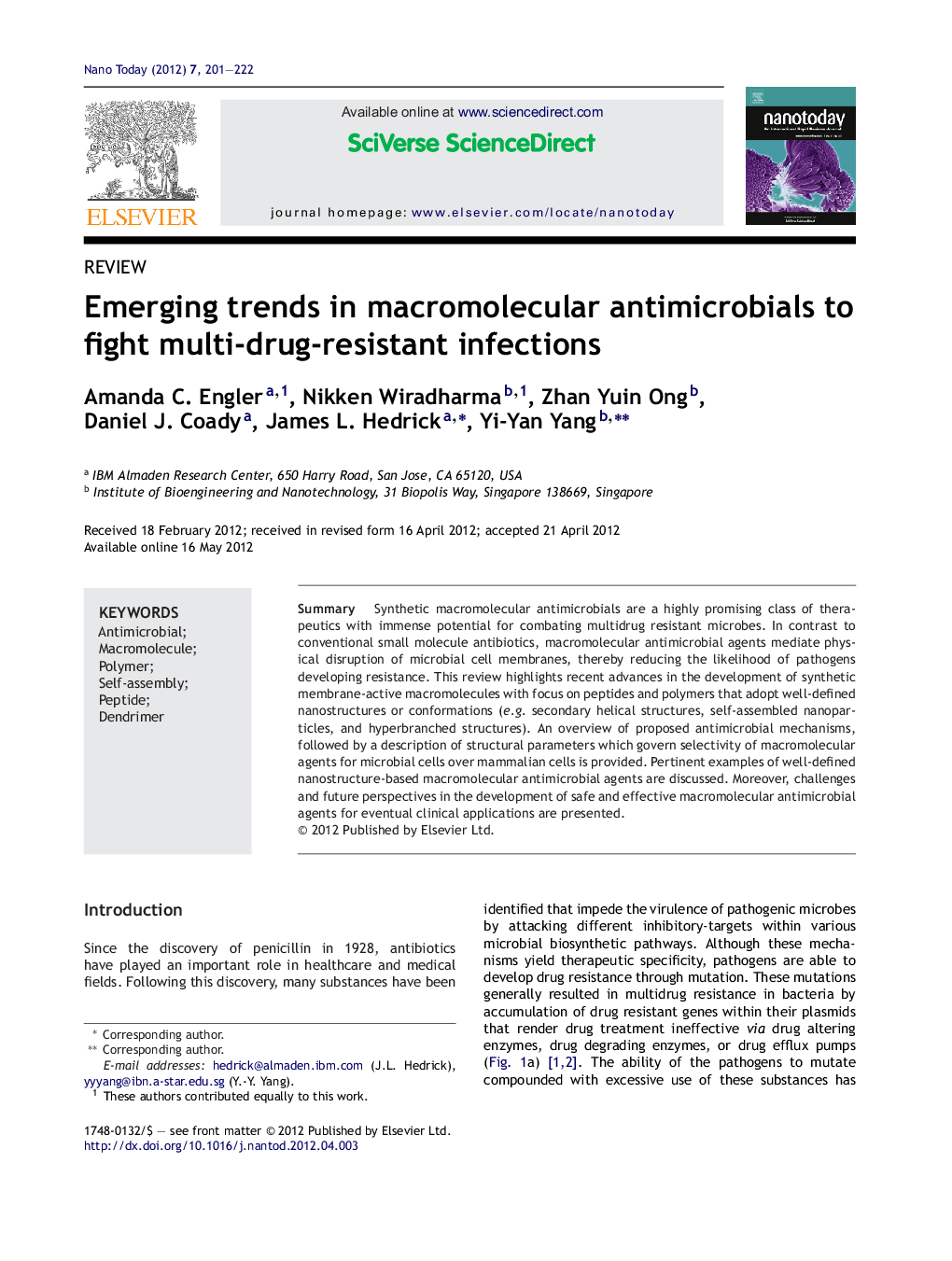| Article ID | Journal | Published Year | Pages | File Type |
|---|---|---|---|---|
| 32454 | Nano Today | 2012 | 22 Pages |
SummarySynthetic macromolecular antimicrobials are a highly promising class of therapeutics with immense potential for combating multidrug resistant microbes. In contrast to conventional small molecule antibiotics, macromolecular antimicrobial agents mediate physical disruption of microbial cell membranes, thereby reducing the likelihood of pathogens developing resistance. This review highlights recent advances in the development of synthetic membrane-active macromolecules with focus on peptides and polymers that adopt well-defined nanostructures or conformations (e.g. secondary helical structures, self-assembled nanoparticles, and hyperbranched structures). An overview of proposed antimicrobial mechanisms, followed by a description of structural parameters which govern selectivity of macromolecular agents for microbial cells over mammalian cells is provided. Pertinent examples of well-defined nanostructure-based macromolecular antimicrobial agents are discussed. Moreover, challenges and future perspectives in the development of safe and effective macromolecular antimicrobial agents for eventual clinical applications are presented.
Graphical abstractFigure optionsDownload full-size imageDownload high-quality image (324 K)Download as PowerPoint slideHighlights► Recent advances in synthetic membrane-active macromolecule antimicrobials. ► Structural parameters that govern activity and selectivity of macromolecules. ► Effects of nanostructure, helical conformation, and hyperbrancing. ► Outlook on the development of safe and effective macromolecular antimicrobials.
